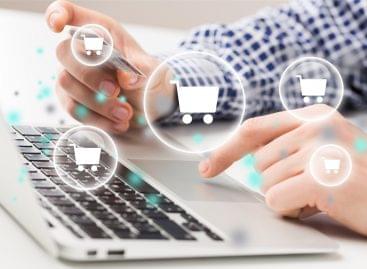Stores in the digital world – 2040
In the last decade e-commerce produced a 75-percent, USD 3 trillion growth of global retail sales. Brick-and-mortar stores are likely to turn into places where products are sold as part of some kind of brand experience. Individuals’ attachment to brands will generate big sales revenue – says Michell Evans, senior head of digital consumer at Euromonitor International.
New era, new tools
Retailers can choose from a large number of tools when they are selling products. They can utilise revolutionary technologies, new business models and retail channels, partnerships and the large quantity of data that is available about consumers. At the same time we shouldn’t forget about the price retailers have to pay on the operational and environmental side for the proliferation of e-commerce. For instance Euromonitor says that in 2021 the most popular related service was free home delivery (60 percent), followed by free product return (52 percent).
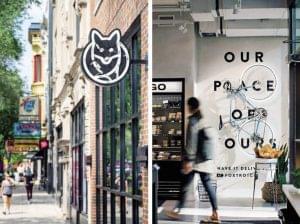
Customers appreciate fast service
Data mining: Are we happy or not?
Another important issue is personalisation vs. private sphere: 22 percent of the survey’s participants said it was them who control their personal information, 55 percent opined that companies shouldn’t make shopper data available to third parties, 46 percent were worried about how many personal things companies know about us and 32 percent shared the view that in exchange for personal data, companies should give much bigger value to consumers.
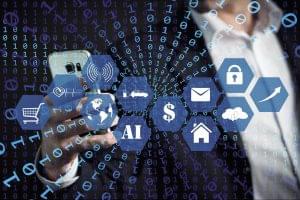
Physical stores of the future need to catch up with the digital world
Store evolution
There will be two types of physical stores in the future: one of them is a convenience store where impulse and irregularly purchased convenience products can be bought, while the other is an experience centre where experiences are tied to each product; in the latter the focus will be on functionality and brand loyalty and not on the purchasing of the product. We don’t have to wait until 2040 for all of this to come true, as there are excellent progressive examples already. For example Beautycorner operates brick-and-mortar stores that broadcast what is happening in-store live, serving as some kind of content provider studio.
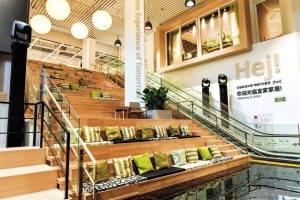
Community space, repair shop, green restaurant – all in one in an average future store
North America
North America leads the way in the integration process implemented by physical stores: 44 percent of shoppers like the convenience offered by brick-and-mortar stores by giving them what they purchased instantly. In 2020 (during the pandemic) Target launched its Drive Up service – shoppers go to the store for the products they ordered online, but they don’t have to get out of their cars, because the store staff have already prepared their parcel and they even place it in the boot of the customers’ cars.
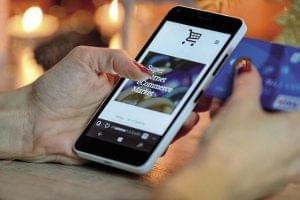
Make an order and be happy with it!
Asia and South America
In 2020 Decathlon introduced a series of retail technologies in Singapore for modernising the customer experience, e.g. customers can finish the shopping process they started in-store in the smartphone app. E-commerce has started growing in South America too: the level of expansion was 57 percent in 2020, making the continent one of the fastest-growing regions in the world in this respect.
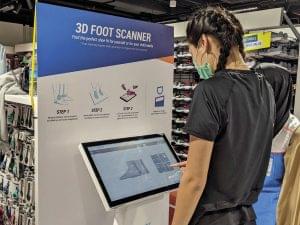
Decathlon’s 3D foot scanner is a huge success in Singapore
//
Related news
Record-breaking Black Friday in online orders
🎧 Hallgasd a cikket: Lejátszás Szünet Folytatás Leállítás Nyelv: Auto…
Read more >A robot vacuum cleaner at home, and the latest top iPhone in Poland, lead the Black Friday top list
🎧 Hallgasd a cikket: Lejátszás Szünet Folytatás Leállítás Nyelv: Auto…
Read more >NGM: safe and conscious shopping during Black Friday, this is what shoppers should pay attention to
🎧 Hallgasd a cikket: Lejátszás Szünet Folytatás Leállítás Nyelv: Auto…
Read more >Related news
Even though the price of cocoa has halved, chocolate will not become cheaper
🎧 Hallgasd a cikket: Lejátszás Szünet Folytatás Leállítás Nyelv: Auto…
Read more >Temu is crushing domestic webshops – Christmas won’t change either
🎧 Hallgasd a cikket: Lejátszás Szünet Folytatás Leállítás Nyelv: Auto…
Read more >Green lending: sustainable financing gaining momentum
🎧 Hallgasd a cikket: Lejátszás Szünet Folytatás Leállítás Nyelv: Auto…
Read more >

